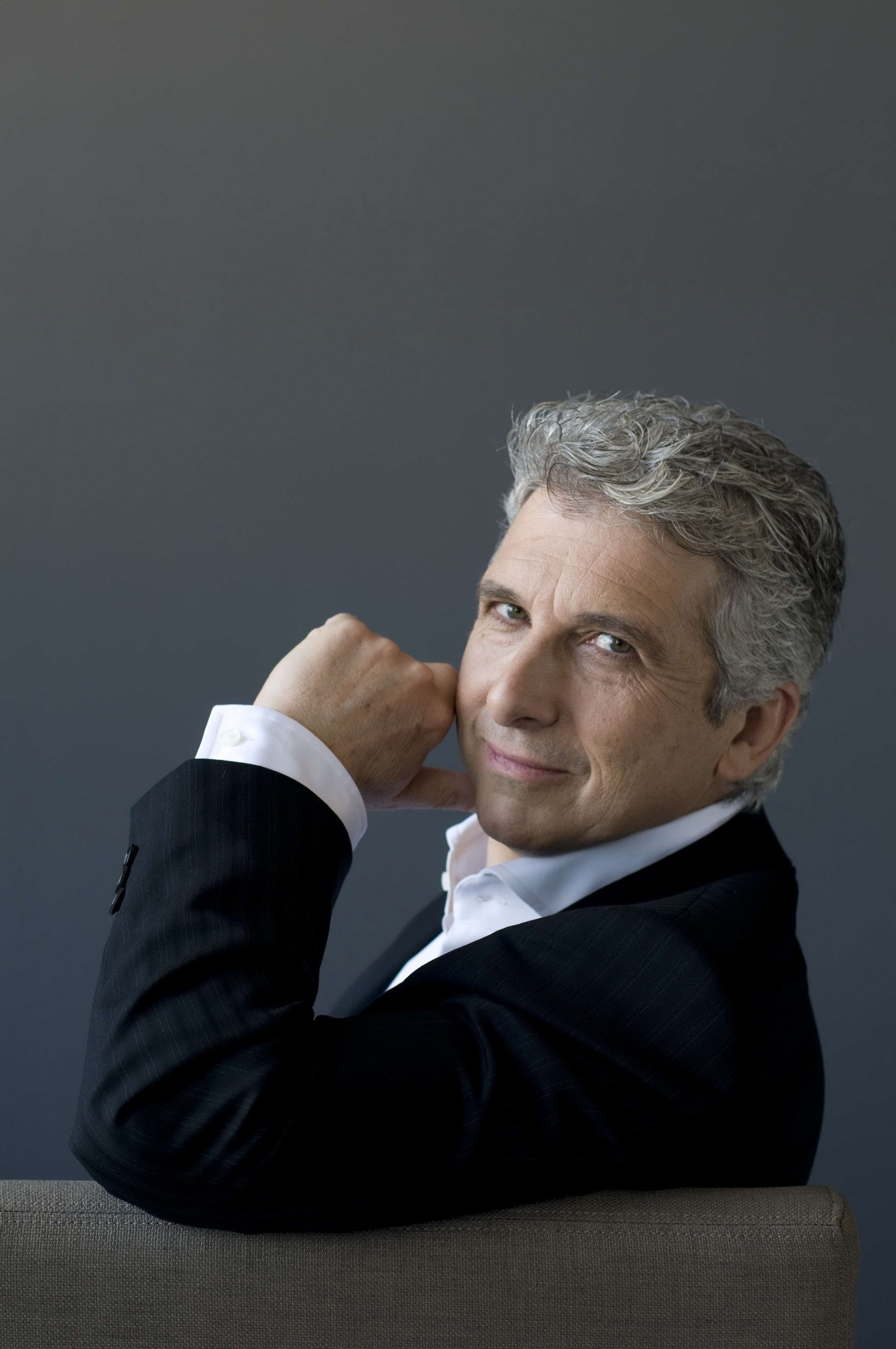|
Back
Toronto Visits Montreal Montreal
Maison symphonique de Montréal, Place des Arts
11/18/2012 -
Pierre Mercure: Triptyque
Ludwig van Beethoven: Concerto in C major for piano, violin and cello, “Triple”, Op. 56
Dmitri Shostakovich: Symphony no. 12 in D minor, “The Year 1917”, Op. 112
Jonathan Crow (Violin), Shauna Rolston (Cello), André Laplante (Piano)
Toronto Symphony Orchestra, Peter Oundjian (Conductor)

P. Oundjian (© Felix Sanchez)
One cannot begrudge orchestras for performing “big” works when visiting other cities—especially rival ones like Toronto and Montreal. If the orchestra really wants to reap applause, it cannot do better than end a concert with quadruple fortes, which is what the Toronto Symphony Orchestra (TSO) did in Montreal on Sunday afternoon with Shostakovich’s Twelfth Symphony. The TSO’s publicity material noted that “the number three plays an essential role: three works on the program (far from unusual—my italics), including a triptyque and a triple concerto. It could also have mentioned that there were three guest soloists, but also that, curiously, each work opened with the lower strings.
The Twelfth, a late work (1961) and a tribute to Lenin, presents a programmatic tableau of major events from the October 1917 revolution, although it is filled with codes subversive to the Communist regime. As with its predecessor, the Eleventh, the four movements are played without pause and have variants of two motifs, borrowed from a revolutionary song in Shostakovich’s Eleventh Symphony and Handel’s “Hallelujah Chorus”.
It is a big-boned symphony, lasting about 40 minutes, with two energetic, noisy, march-like movements flanking two, peaceful ones. It is not a great work, for among other reasons there are too many tedious repetitions of the principle motifs—one for Lenin, the other “the People”— that dominate the entire work. The TSO nevertheless delivered an exhilarating performance. From the first moments one was struck by the heavy, swaying Russian beat. Conductor Peter Oundjian maintained energetic rhythm, excellent command of dynamic contrasts, well-controlled balance among all sections of the orchestra and, save for some sloppy entrances from the brass (something patrons of the Orchestre symphonique de Montréal are used to), drew superlative playing from all his musicians. The solos, especially from the principal trombone, were exemplary.
The other major work brought together three distinguished Canadian musicians—the young concertmaster of the TSO and previous concertmaster of the OSM, Jonathan Crow, cellist Shauna Rolston and pianist André Laplante—to perform Beethoven’s Triple Concerto. The work, first of its kind, features the piano trio as a collective soloist. This performance, however, lacked cohesion and drive. Crow played with a crisp, meticulous technique and sweet lyricism. Laplante drew consistently evenly-articulated, well-rounded tones from the piano. His playing was mesmerizing. Rolston’s sound was deep, assured, luxurious and at times profound. Her softer notes sang. But when her partners were playing, she was barely audible. But as a “trio” they lacked the intimacy and confidence of playing together over a long period that helps create a powerful, heroic performance.
The concert opened with Montreal composer Pierre Mercure’s (1927-66) Triptyque, a 10-minute tapestry of orchestral colors, comprising three movements with one break after a tumultuous end to the second movement. The TSO performed it with passion and precision, marred only by an uneven first entry from the trumpets.
The concert began 10 minutes late. Peter Oundjian patronized the audience by announcing how nice it was to be here, introducing the widow of Pierre Mercure (the actress Monique) and unnecessarily repeating program notes that patrons had plenty of time to read before the program began.
So which is better, the OSM or TSO? I’d say, from what I heard Sunday afternoon, that it’s a tie.
ConcertoNet is on Facebook
Twitter: @concertonet
Earl Arthur Love
|